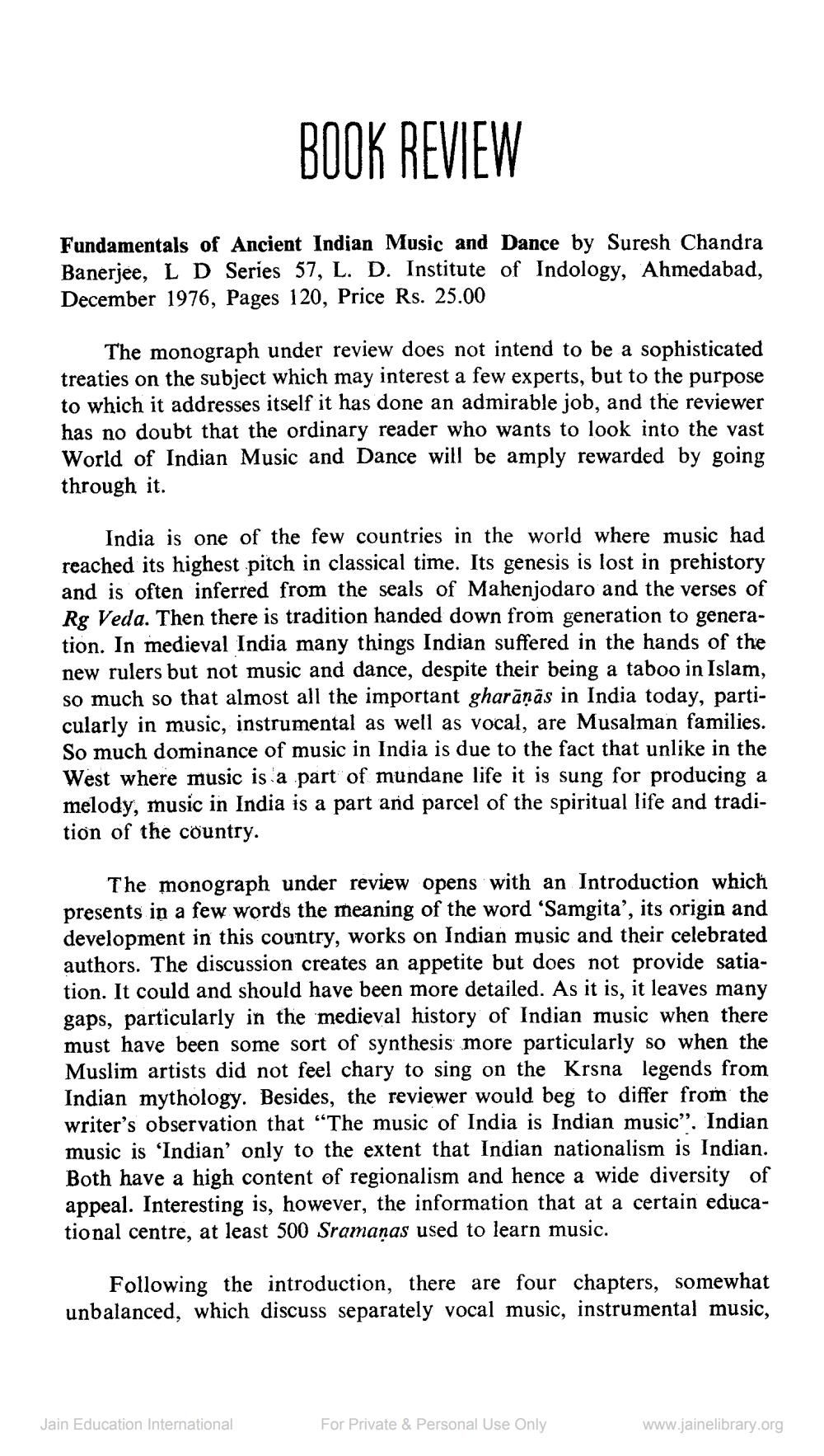Book Title: Jain Journal 1979 10 Author(s): Jain Bhawan Publication Publisher: Jain Bhawan Publication View full book textPage 3
________________ BOOK REVIEW Fundamentals of Ancient Indian Music and Dance by Suresh Chandra Banerjee, L D Series 57, L. D. Institute of Indology, Ahmedabad, December 1976, Pages 120, Price Rs. 25.00 The monograph under review does not intend to be a sophisticated treaties on the subject which may interest a few experts, but to the purpose to which it addresses itself it has done an admirable job, and the reviewer has no doubt that the ordinary reader who wants to look into the vast World of Indian Music and Dance will be amply rewarded by going through it. India is one of the few countries in the world where music had reached its highest pitch in classical time. Its genesis is lost in prehistory and is often inferred from the seals of Mahenjodaro and the verses of Rg Veda. Then there is tradition handed down from generation to generation. In medieval India many things Indian suffered in the hands of the new rulers but not music and dance, despite their being a taboo in Islam, so much so that almost all the important gharāņās in India today, particularly in music, instrumental as well as vocal, are Musalman families. So much dominance of music in India is due to the fact that unlike in the West where music is a part of mundane life it is sung for producing a melody, music in India is a part and parcel of the spiritual life and tradition of the country. The monograph under review opens with an Introduction which presents in a few words the meaning of the word 'Samgita', its origin and development in this country, works on Indian music and their celebrated authors. The discussion creates an appetite but does not provide satiation. It could and should have been more detailed. As it is, it leaves many gaps, particularly in the medieval history of Indian music when there must have been some sort of synthesis more particularly so when the Muslim artists did not feel chary to sing on the Krsna legends from Indian mythology. Besides, the reviewer would beg to differ from the writer's observation that “The music of India is Indian music”. Indian music is 'Indian' only to the extent that Indian nationalism is Indian. Both have a high content of regionalism and hence a wide diversity of appeal. Interesting is, however, the information that at a certain educational centre, at least 500 Sramaņas used to learn music. Following the introduction, there are four chapters, somewhat unbalanced, which discuss separately vocal music, instrumental music, Jain Education International For Private & Personal Use Only www.jainelibrary.orgPage Navigation
1 2 3 4 5 6 7 8 9 10 11 12 13 14 15 16 17 18 19 20 21 22 23 24 25 26 27 28 29 30 31 32 ... 41
